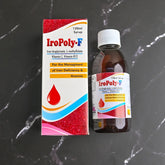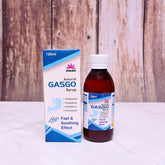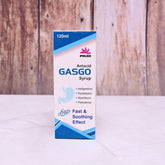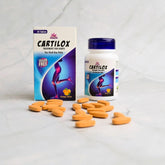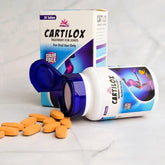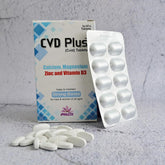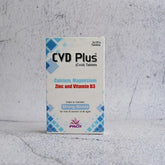This comprehensive guide explores evidence-based treatments, natural supplements, prescription medications, and lifestyle interventions that can support your joint and bone health throughout life. From traditional remedies to cutting-edge therapies, we'll examine what science tells us about the most effective approaches to maintaining strong bones and flexible joints.
Understanding Joint and Bone Health: The Foundation of Mobility
Before diving into specific treatments, it's essential to understand how joints and bones work together to support your body's movement and structure. Your skeletal system consists of 206 bones that provide a framework, protect vital organs, and serve as mineral reservoirs. Joints, where two or more bones meet, enable movement through a complex system of cartilage, synovial fluid, ligaments, and surrounding muscles.
The Science Behind Joint Deterioration
As we age, several changes occur that can affect joint and bone health. Cartilage, the smooth tissue that cushions joints, naturally wears down over time. Bone density peaks in our thirties and gradually declines, particularly in women after menopause. Understanding these natural processes helps explain why targeted interventions become increasingly important with age.
The most common conditions affecting joint and bone health include osteoarthritis, rheumatoid arthritis, osteoporosis, and general wear and tear from daily activities. Each condition requires different approaches, making it crucial to identify the root cause of any discomfort or mobility issues.
Top Evidence-Based Medicines for Joint and Bone Health
1. Glucosamine: The Cartilage Building Block
When people ask, "What is the best medicine for joints and bones?" glucosamine consistently ranks among the top recommendations. Glucosamine is one of the most popular supplements for arthritis, touted for its ability to delay cartilage breakdown, relieve osteoarthritis pain, and increase joint mobility.
How Glucosamine Works:
- Supports cartilage structure and repair
- May slow cartilage breakdown
- Helps maintain joint flexibility
- Provides building blocks for connective tissue
Types of Glucosamine:
- Glucosamine Sulfate: Often considered the gold standard
- Glucosamine Hydrochloride: Alternative form with similar benefits
- N-Acetyl Glucosamine: Less common but potentially effective
Research suggests that glucosamine sulfate may be particularly effective for knee osteoarthritis, with studies showing improvements in pain and joint function. The typical dosage ranges from 1,500 to 3,000 mg daily, though individual needs may vary.
2. Chondroitin Sulfate: The Joint Cushion Protector
Chondroitin and glucosamine are two natural substances within your cartilage, which tend to decrease around your joints as you age. Supplements containing these components have been found to reduce pain caused by cartilage loss, with chondroitin improving function and glucosamine improving pain relief.
Chondroitin sulfate works by:
- Maintaining cartilage elasticity
- Reducing inflammation in joints
- Supporting synovial fluid production
- Potentially slowing cartilage breakdown
The combination of glucosamine and chondroitin is particularly popular, with many studies examining their synergistic effects on joint health.
3. Calcium and Vitamin D3: The Bone Strength Duo
For bone health specifically, calcium and vitamin D3 represent the most fundamental nutritional intervention. Our bodies need to get enough calcium and vitamin D to help keep our bones strong.
Calcium's Role:
- Primary building block of bone tissue
- Essential for bone mineralization
- Supports muscle function
- Helps prevent osteoporosis
Vitamin D3's Function:
- Vitamin D is an essential nutrient that helps the body absorb calcium, a building block for strong bones
- Regulates calcium absorption in the intestines
- Supports immune system function
- May help reduce inflammation
The recommended daily intake varies by age and gender, but adults typically need 1,000-1,200 mg of calcium and 600-800 IU of vitamin D3 daily. However, many people benefit from higher vitamin D3 doses, particularly those with limited sun exposure.
4. Collagen Type II: Structural Support for Cartilage
Collagen Type II has gained significant attention as a targeted therapy for joint health. Unlike other forms of collagen, Type II specifically supports cartilage structure and may help with joint comfort.
Benefits of Collagen Type II:
- Provides amino acids for cartilage repair
- May reduce joint stiffness
- Supports the overall joint structure
- Could help maintain joint mobility
Undenatured collagen Type II, in particular, has shown promise in clinical studies for reducing joint discomfort and improving mobility in people with osteoarthritis.
5. MSM (Methylsulfonylmethane): The Anti-Inflammatory Agent
MSM has emerged as a popular supplement for joint health, particularly valued for its anti-inflammatory properties. This sulfur-containing compound occurs naturally in the body and may help with:
- Reducing joint inflammation
- Supporting connective tissue health
- Alleviating exercise-induced muscle damage
- Potentially improving joint flexibility
Studies suggest that MSM may be particularly effective when combined with other joint health ingredients like glucosamine and chondroitin.
Natural and Alternative Approaches to Joint and Bone Health
Turmeric and Curcumin: Nature's Anti-Inflammatory
A 2021 research review of 10 studies found that supplementation with turmeric or curcumin extract improves knee OA joint pain compared to a placebo. The active compound curcumin provides powerful anti-inflammatory effects that may benefit joint health.
Benefits of Turmeric/Curcumin:
- Potent anti-inflammatory properties
- Antioxidant effects
- May reduce joint pain and stiffness
- Supports overall inflammatory response
For optimal absorption, curcumin is often combined with piperine (black pepper extract) or formulated with enhanced bioavailability.
Omega-3 Fatty Acids: Essential for Joint Health
Fish oil and other omega-3 sources provide EPA and DHA, essential fatty acids that support joint health through:
- Anti-inflammatory effects
- Support for synovial fluid quality
- Potential reduction in morning stiffness
- Overall cardiovascular and cognitive benefits
Borage Oil and Evening Primrose Oil
Daily borage oil supplements may help treat symptoms of rheumatoid arthritis and even reduce the dose you need of your prescription treatments for joint pain and swelling. These oils contain gamma-linolenic acid (GLA), which may help manage inflammatory conditions.
Magnesium and Zinc: Essential Minerals
Calcium, vitamin D, zinc, and magnesium are all important nutrients that help to maintain normal bone health. These minerals work synergistically to support bone formation and maintenance.
Magnesium's Role:
- Activates vitamin D
- Supports bone formation
- Regulates calcium levels
- Essential for over 300 enzymatic reactions
Zinc's Function:
- Supports bone formation
- Essential for collagen synthesis
- Aids in tissue repair
- Supports immune function
Prescription Medications for Joint and Bone Conditions
For Osteoarthritis and Joint Pain
NSAIDs (Non-Steroidal Anti-Inflammatory Drugs):
- Reduce inflammation and pain
- Available over-the-counter and by prescription
- Include ibuprofen, naproxen, and celecoxib
- May have gastrointestinal and cardiovascular side effects with long-term use
Topical Treatments:
- Provide localized relief
- Lower systemic side effects
- Include capsaicin, menthol, and topical NSAIDs
- It may be particularly useful for single-joint problems
Corticosteroid Injections:
- Powerful anti-inflammatory effects
- Direct injection into affected joints
- Provide temporary but significant relief
- May be repeated several times per year
For Osteoporosis and Bone Loss
Bisphosphonates:
- Slow bone breakdown
- Include alendronate, risedronate, and zoledronic acid
- Proven to reduce fracture risk
- Require specific administration guidelines
Selective Estrogen Receptor Modulators (SERMs):
- Provide estrogen-like effects on bone
- May help prevent bone loss in postmenopausal women
- Include raloxifene
- May have cardiovascular and blood clot risks
Denosumab:
- A monoclonal antibody that reduces bone resorption
- Administered by injection every six months
- Effective for reducing fracture risk
- Requires monitoring for side effects
Teriparatide and Abaloparatide:
- Anabolic agents that stimulate bone formation
- Reserved for severe osteoporosis cases
- Administered by daily injection
- Expensive but highly effective
Comprehensive Treatment Approaches: Beyond Single Solutions
The Importance of Combination Therapy
Research increasingly supports combination approaches rather than relying on single interventions. The most effective joint and bone health strategies often include:
- Nutritional Foundation: Adequate calcium, vitamin D3, magnesium, and other essential nutrients
- Targeted Supplements: Glucosamine, chondroitin, and other joint-specific nutrients
- Anti-Inflammatory Support: Omega-3 fatty acids, turmeric, or other natural anti-inflammatories
- Lifestyle Modifications: Exercise, weight management, and stress reduction
- Medical Management: Appropriate use of medications when needed
Exercise: The Ultimate Medicine for Joints and Bones
While not a medicine in the traditional sense, exercise represents one of the most powerful interventions for joint and bone health. Weight-bearing exercises stimulate bone formation, while flexibility and strength training support joint function.
Types of Beneficial Exercise:
- Weight-bearing activities: Walking, jogging, dancing
- Resistance training: Weights, resistance bands, bodyweight exercises
- Low-impact activities: Swimming, cycling, tai chi
- Flexibility work: Yoga, stretching, range-of-motion exercises
Nutrition Beyond Supplements
A comprehensive approach to joint and bone health includes not just supplements but whole foods rich in supportive nutrients:
Bone-Building Foods:
- Dairy products (if tolerated)
- Leafy green vegetables
- Fish with soft bones (sardines, canned salmon)
- Fortified plant-based alternatives
- Nuts and seeds
Anti-Inflammatory Foods:
- Fatty fish rich in omega-3s
- Colorful fruits and vegetables
- Spices like turmeric and ginger
- Green tea
- Olive oil
Age-Specific Considerations for Joint and Bone Medicine
Young Adults (20s-30s)
Focus on building peak bone mass and establishing healthy habits:
- Adequate calcium and vitamin D intake
- Regular weight-bearing exercise
- Avoiding smoking and excessive alcohol use
- Building strong muscular support for joints
Middle Age (40s-50s)
Begin preventive strategies as bone loss starts:
- Continue emphasis on nutrition and exercise
- Consider baseline bone density testing
- Address any joint discomfort early
- Maintain a healthy weight to reduce joint stress
Older Adults (60+)
Focus on maintaining function and preventing fractures:
- Higher vitamin D requirements
- Fall prevention strategies
- Regular monitoring of bone density
- Comprehensive joint health support
- Balance training to prevent falls
Special Considerations for Women
Women face unique challenges related to hormonal changes:
- Accelerated bone loss after menopause
- Higher risk of osteoporosis
- May benefit from hormone replacement therapy discussion
- Importance of weight-bearing exercise throughout life
Safety Considerations and Potential Side Effects
Supplement Safety
While natural supplements are generally safe, they can have side effects and interactions:
Glucosamine and Chondroitin:
- Generally well-tolerated
- May interact with blood thinners
- Rare allergic reactions (especially with shellfish allergies to glucosamine)
- Possible gastrointestinal upset
Calcium:
- May cause constipation or kidney stones in some people
- Can interfere with the absorption of other minerals
- High doses may increase cardiovascular risk
- Best absorbed in divided doses
Vitamin D3:
- Generally safe even at higher doses
- Possible toxicity at very high levels
- May interact with certain medications
- Regular monitoring recommended for high-dose supplementation
Prescription Medication Considerations
All prescription medications carry potential risks and benefits that should be carefully weighed:
NSAIDs:
- Gastrointestinal risks (ulcers, bleeding)
- Cardiovascular risks with long-term use
- Kidney function considerations
- Drug interactions
Osteoporosis Medications:
- Specific administration requirements
- Potential for jaw or thigh bone problems (rare)
- Need for regular monitoring
- Cost considerations
Emerging Therapies and Future Directions
Regenerative Medicine
New approaches to joint health include:
- Platelet-rich plasma (PRP) injections
- Stem cell therapy
- Hyaluronic acid injections
- Prolotherapy
Advanced Nutritional Approaches
Research continues on innovative supplements:
- Specialized collagen peptides
- Hyaluronic acid supplements
- Advanced antioxidant formulations
- Targeted nutrient combinations
Personalized Medicine
The future may include:
- Genetic testing to optimize supplement choices
- Biomarker-guided therapy selection
- Personalized exercise prescriptions
- Customized nutritional recommendations
Creating Your Personalized Joint and Bone Health Plan
Step 1: Assessment and Evaluation
Start with a comprehensive evaluation:
- Medical history and current symptoms
- Physical examination by a healthcare provider
- Appropriate testing (bone density, inflammatory markers)
- Lifestyle and dietary assessment
Step 2: Setting Realistic Goals
Establish clear objectives:
- Pain reduction or management
- Improved mobility and function
- Fracture prevention
- Overall quality of life enhancement
Step 3: Implementing a Multi-Modal Approach
Combine various strategies:
- Appropriate supplements based on needs and evidence
- Regular physical activity tailored to abilities
- Nutritious diet supporting bone and joint health
- Stress management and adequate sleep
- Medical management as needed
Step 4: Monitoring and Adjustment
Regular evaluation ensures optimal results:
- Track symptoms and functional improvements
- Monitor for side effects or complications
- Adjust approach based on response
- Regular follow-up with healthcare providers
Conclusion: Finding Your Best Medicine for Joints and Bones
The answer to "what is the best medicine for joints and bones" isn't a single solution but rather a personalized combination of evidence-based interventions tailored to individual needs, age, health status, and goals. The most effective approaches typically combine targeted supplementation with lifestyle modifications and, when appropriate, medical treatments.
Key takeaways include:
- Foundation First: Ensure adequate calcium, vitamin D3, and other essential nutrients
- Evidence-Based Supplements: Consider glucosamine, chondroitin, collagen Type II, and MSM based on research
- Natural Anti-Inflammatories: Incorporate omega-3 fatty acids, turmeric, and other natural compounds
- Exercise is Essential: Weight-bearing and strength training exercises are crucial for bone and joint health
- Individualized Approach: Work with healthcare providers to develop a personalized plan
- Long-term Commitment: Joint and bone health requires consistent, long-term attention
Remember that optimal joint and bone health is an investment in your future mobility, independence, and quality of life. By combining the best available treatments with healthy lifestyle choices, you can maintain strong bones and comfortable joints throughout your life.
Frequently Asked Questions About Joint and Bone Medicine
What supplements should I take for joint and bone health?
The most evidence-based supplements for joint and bone support include:
-
Glucosamine Sulfate (1,500 mg daily) – helps reduce joint pain and may slow cartilage breakdown.
-
Chondroitin Sulfate (1,200 mg daily) – supports joint cushioning and flexibility.
-
Collagen Type II – promotes cartilage regeneration and joint mobility.
-
MSM (Methylsulfonylmethane) – may help reduce inflammation and joint stiffness.
-
Calcium (1,000–1,200 mg daily) – essential for maintaining bone strength.
-
Vitamin D3 (1,000–4,000 IU daily) – improves calcium absorption and bone density.
-
Omega-3 Fatty Acids – may help reduce joint inflammation.
-
Turmeric (Curcumin) – known for its natural anti-inflammatory properties.
Cartilox Tablets combine many of these key ingredients in a single, convenient formulation designed to support joint comfort, mobility, and overall bone health.
How long does it take for joint supplements to work?
Most people notice improvements in joint comfort within 6-12 weeks of consistent supplementation. However, some may experience benefits sooner, while others may need up to 6 months to see optimal results. Consistency is key to achieving and maintaining benefits.
Are natural remedies as effective as prescription medications?
Natural remedies can be highly effective for mild to moderate joint and bone issues, often with fewer side effects. However, severe conditions may require prescription medications for optimal management. The best approach often combines both natural and medical treatments.
Can diet alone provide enough nutrients for bone health?
While a balanced diet is fundamental, many people struggle to get adequate amounts of key nutrients like vitamin D3 and omega-3 fatty acids from food alone. Targeted supplementation often helps ensure optimal nutrient levels for bone and joint health.
What lifestyle changes support joint and bone health?
Regular weight-bearing exercise, maintaining a healthy weight, not smoking, limiting alcohol, getting adequate sleep, managing stress, and eating a nutrient-rich diet all contribute significantly to joint and bone health.






